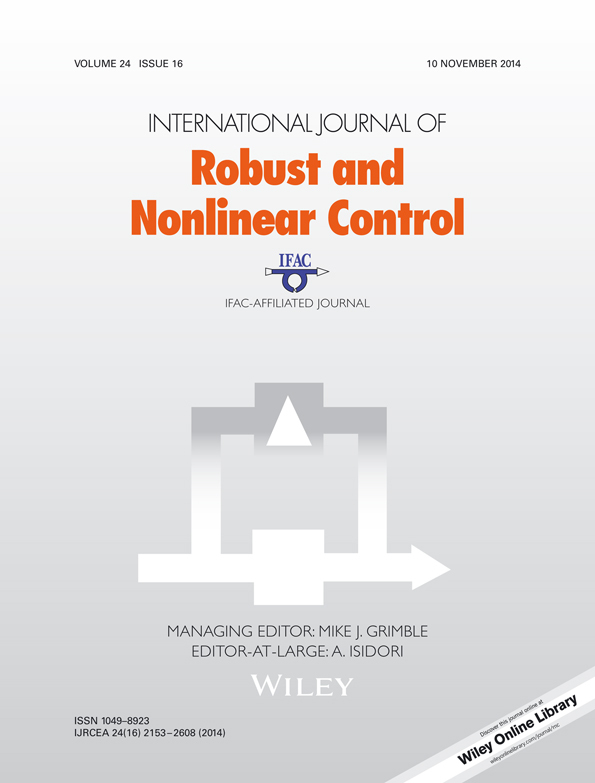SUMMARY
Preserving Order Observers provide an estimation that is always above or below the true variable, and in the absence of uncertainties/perturbations, the estimation converges asymptotically to the true value of the variable. In this paper, we propose a novel methodology to design preserving order observers for a class of nonlinear systems in the nominal case or when perturbations/uncertainties are present. This objective is achieved by combining two important systemic properties: dissipativity and cooperativity. Dissipativity is used to guarantee the convergence of the estimation error dynamics, whereas cooperativity of the error dynamics assures the order-preserving properties of the observer. The use of dissipativity for observer design offers a big flexibility in the class of nonlinearities that can be considered while keeping the design simple: it leads in many situations to the solution of a linear matrix inequality (LMI). Cooperativity of the observer leads to an LMI. When both properties are considered simultaneously, the design of the observer can be reduced, in most cases, to the solution of both a bilinear matrix inequality and an LMI. Because a couple of preserving order observers, one above and one below, provide an interval observer, the proposed methodology unifies several interval observers design methods. The design methodology has been validated experimentally in a three-tanks system, and it has also been tested numerically and compared with an example from the literature.Copyright © 2013 John Wiley & Sons, Ltd.




